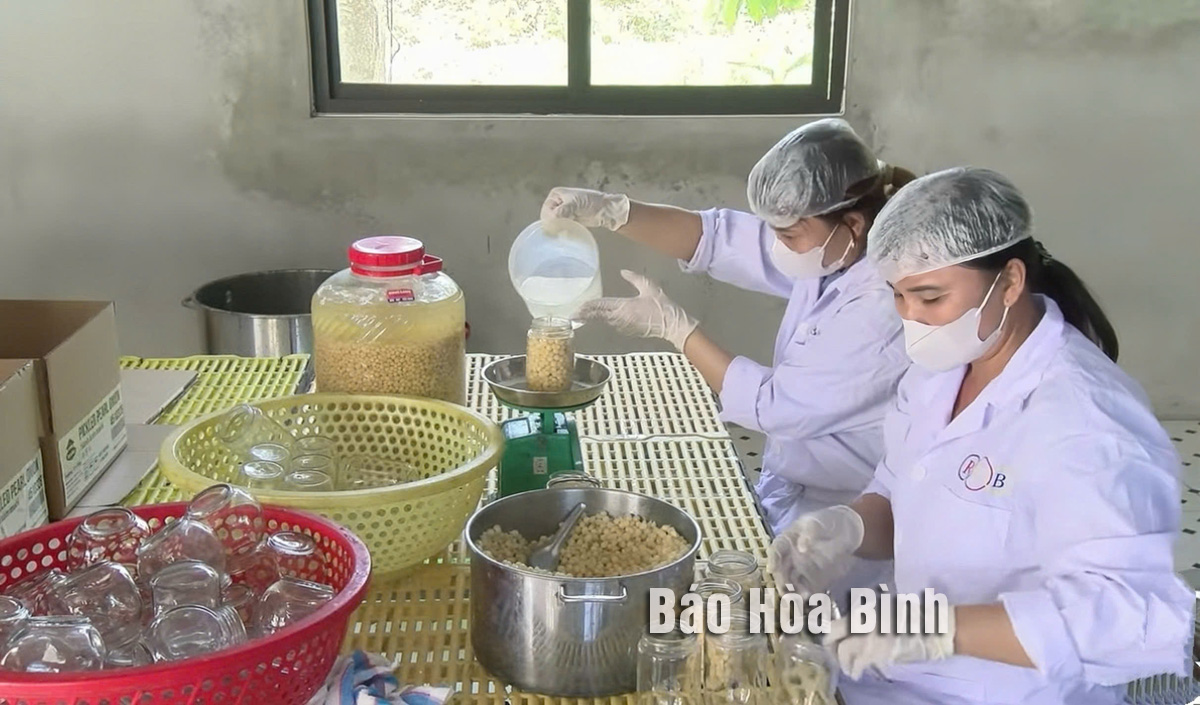



Farmers at Phu Lai Agricultural Cooperative in Phu Lai commune, Yen Thuy district, produce pickled shallots that meet food safety and hygiene standards, helping local growers find stable markets for their products.
Binh Son Agricultural and Trade Service Cooperative in Binh Son commune, Kim Boi district, brings together farmers who share a common vision. According to its director Nguyen Thi Thu Hoai, the cooperative strictly follows VietGAP standards and prioritises organic fertilisers and biological pesticides. As a result, annual profits have increased by more than 2.4 billion VND, 20–30% higher than traditional farming methods. With 25 members, most of whom are Muong ethnic minorities, the cooperative produces safe vegetables and ensures an average monthly income of 6 million VND per person. All products are guaranteed for purchase.
Such success stories are no longer rare in Hoa Binh. Three years after implementing Resolution No. 01 of the provincial Party Committee's Standing Board, which seeks to strengthen the Party's leadership over Farmers’ Unions at all levels in building strong organisations and supporting agricultural production and product consumption during the 2021–2025 period, the province has established 677 effective collective economic models. These include 79 cooperatives, 202 cooperative groups, 71 sub-unions, and 325 occupational farmers’ groups.
Through diverse communication channels, the Farmers’ Unions at all levels have helped members understand that cooperation is about growing stronger together, not being constrained. In many areas, the unions have played a key role in linking farmers with businesses, forming production - consumption chains. Many cooperatives have secured stable supply contracts, put products for sale on e-commerce platforms, introduced QR codes for traceability, and developed packaging and branding.
Over the past three years, hundreds of cooperative leaders and group heads have received training in management skills. Ethnic minority farmers who once only knew how to use hoes and ploughs are now learning to create production plans, forecast market developments, and even livestream their products online. The communication about developing collective economic models has been integrated into rural development, poverty reduction, and startup programmes, with some models being recognised at the national level.
Nevertheless, many cooperatives still struggle with limited expertise, capital, and management capacity. Some farmers remain reluctant to collaborate, contribute capital, or share profits. Coordination among state agencies and social-political organisations is sometimes fragmented and ineffective.
Looking ahead, the Farmers’ Unions at all levels will continue connecting businesses with farmers, developing chain-based production models, and supporting cooperatives with digital technology and modern governance. A special focus will be placed on startups in rural areas, helping farmers, especially the younger generation, confidently pursue collective economic development.